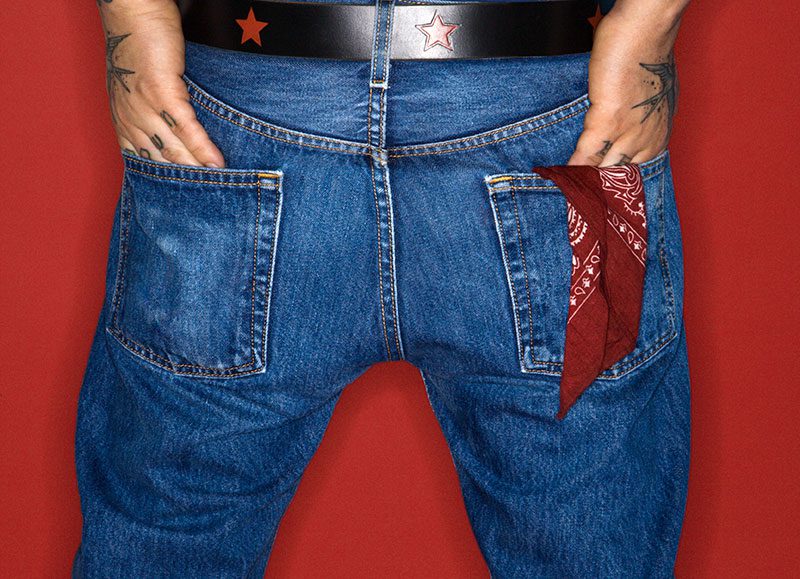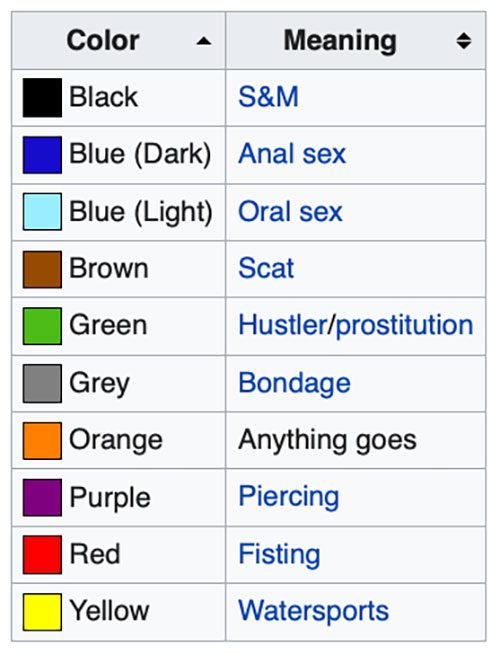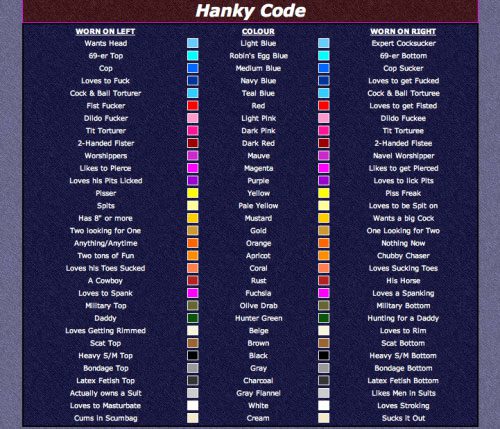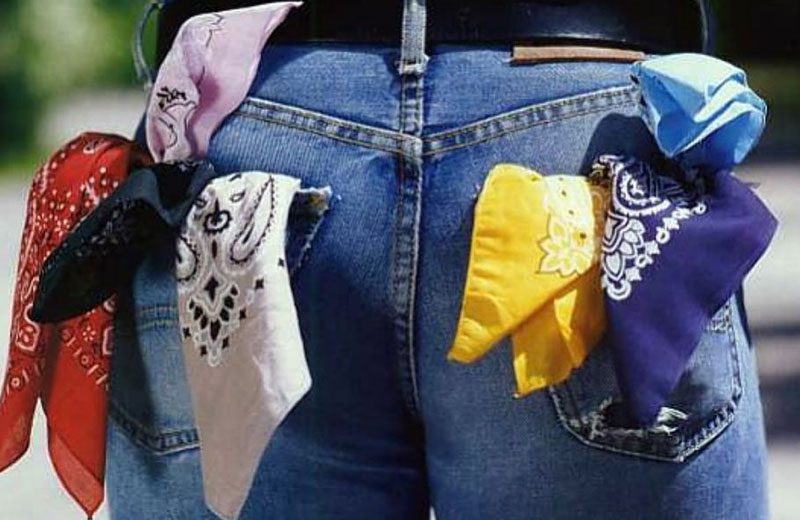
On a Throwback Thursday note, I was recently reminded of the so-called ‘Hanky code’ used predominately by gay men in the 1970s and 1980s as a method of sexual signaling.
Before we had apps like Scruff and Grindr to pretty much ‘lay it all out there’ in terms of what sexual practice, fetish or role one preferred, there was the hanky code. The practice was also referred to as the ‘bandana code’ or flagging.
Basically, men would stuff a colored bandana in their back pocket – left position meant you liked to take the top bunk or dominant role while right pocket wearers were letting the world know they preferred being on the receiving/passive side of the spectrum.
And there was a whole rainbow of interests to express interest in.
Stores that catered to gay men would sell a variety of bandanas along with free decoder lists so guys could make sure they were sending the appropriate signal.
A red hanky indicated an interest in fisting; light blue meant someone might be on the hunt for oral sex; a yellow bandana was a pretty obvious signal for watersports; and green would act as an advertisement for hustlers.

Of course, there was always the chance that a newbie gay might think the hanky thing was just a cool fashion choice. Inevitably, though, a friend would let them know what that brown bandana hanging from their right belt loop really meant.
Eventually, the hanky code became quite an extensive list of hues and shades differentiating to such a degree as to separate light blue, robin’s egg blue, teal blue and navy blue. It practically became its own language.

Some credit a journalist for the Village Voice in early 1971 for coming up with the system while others say Alan Selby, founder of Mr. S Leather in San Francisco, created the first hanky code as a way to sell an accidental over-shipment of bandanas he received.
According to The History Project, the hanky code was predominately used early on by gay men interested in the BDSM movement or the leather subculture. But it soon started to spread into the queer mainstream by the 1970s.
But the nonverbal shorthand began to fall out of favor in the 1980s as anonymous sex habits grew to be frowned upon thanks to the HIV/AIDS epidemic and its devastating effects on our community.
Most trends tend to evolve over time, though, and by the 1990s a black and white checked bandana became a way to flag someone as embracing safe sex practices and HIV awareness.
As we moved into the digital age, with increased embracing of the internet, use of the hanky code eventually faded as more overt fashion choices regarding sexual predilections emerged in the gay community like leather harnesses, collars, and more.
But the hanky code is important to remember as a part of LGBTQ history beginning in the 1970s as we grew more confident about signaling not only our identity and visibility in public but also reflecting the queer zeitgeist through the years.

